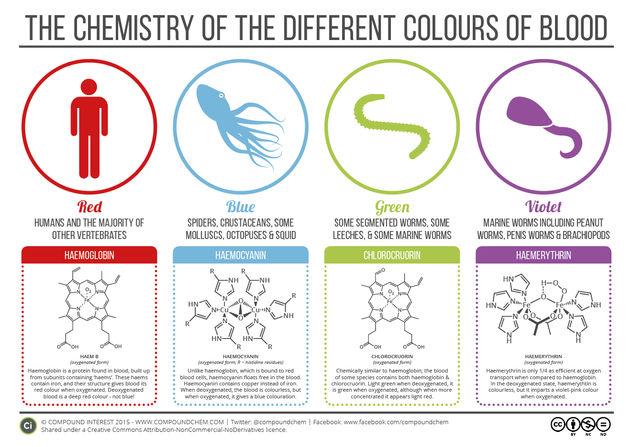Human blood, as well as that of most other vertebrates, is red as a result of haemoglobin, a large protein found in red blood cells which contains iron atoms within its structure. Haemoglobin is what’s known as a respiratory pigment, and it plays a vital role in the body, ferrying oxygen around the body to your cells and helping carbon dioxide back to the lungs where it can be exhaled. The large protein consists of four smaller units which themselves contain small sections called haems, each of which contains an iron atom. This can ‘bind’ to oxygen, giving red blood cells their oxygen transporting ability.
There are some creatures, however, for whom blue blood is the norm. Crustaceans, spiders, squid, octopuses, and some molluscs all have blue blood as a result of having a different respiratory pigment. It doesn’t stop there; green blood, too, is possible, in some species of worms and leeches. Finally, violet blood is also possible, albeit in a limited range of marine worms (including the rather unfortunately named penis worms).






